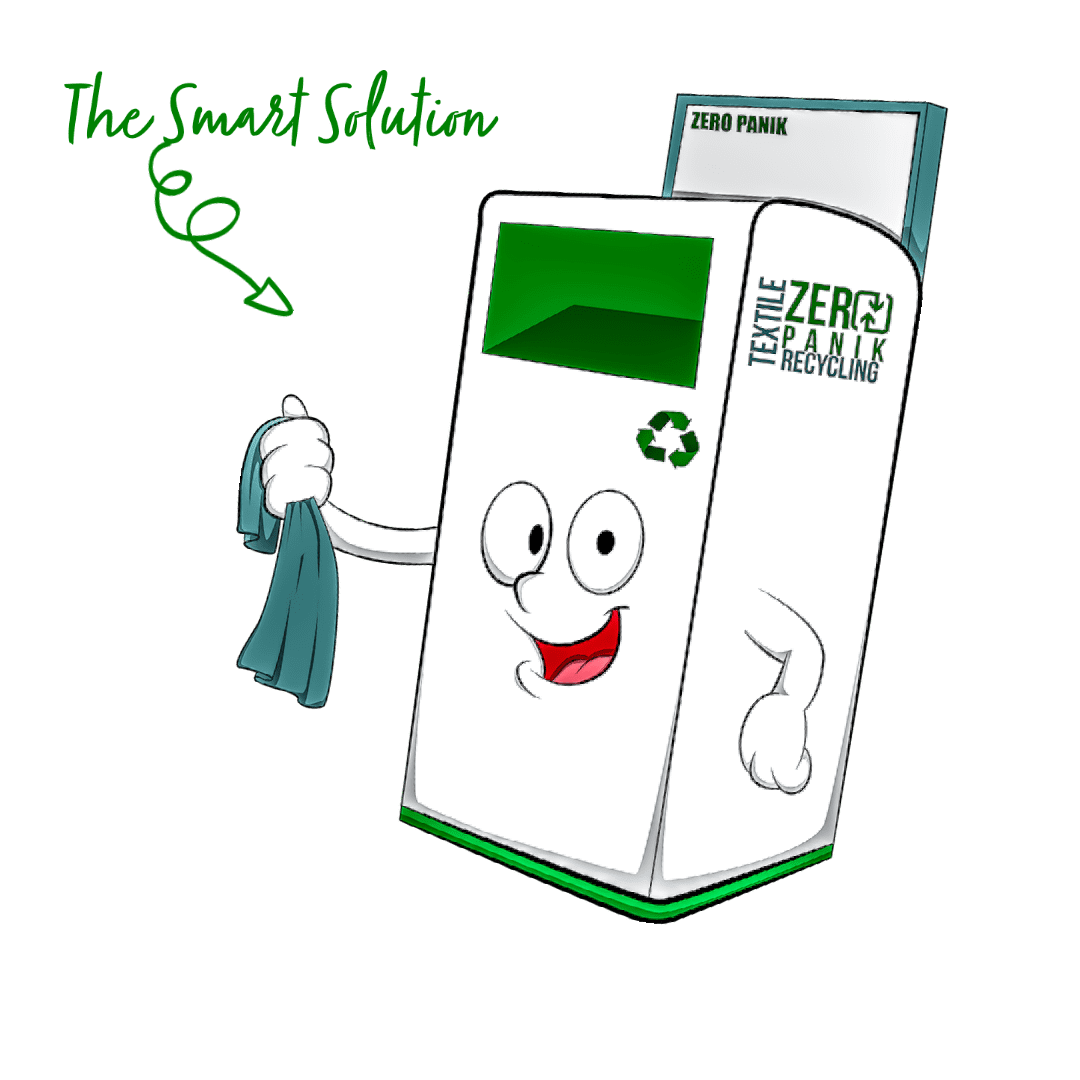
According to a recent study, sustainability programs have tremendous potential to decrease the environmental footprint of the healthcare industry and drastically reduce costs.
While there are many opportunities within the healthcare industry to reduce waste and improve sustainability efforts. One area often overlooked that creates a huge impact is hospital linen services which include the stocking, laundering, and discarding of medical linens. The growing market of disposable linen, cosmetotextiles, and other technical medical textiles used in the health care system is expensive and can lead to huge losses, associated with theft, uncaptured charges, and unopened items being thrown away. Additionally, the cost to dispose of medical waste is higher than that of municipal waste due to the biohazards and treatment process required to dispose of the waste safely.
What Are Medical Textiles?
Medical textiles can be made from a variety of fabrics such as cotton, viscose, rayon, polyester fibers, silk, chitosan fibers, alginate fibers, and other forms of polymeric materials made from polyethylene, polypropylene, polytetrafluoroethylene, polyester, polyamide, polyurethane, and polylactic acid. Medical textiles belong to a group of products generally referred to as technical textiles which is a term coined in the 1980s to describe the growing variety of products and manufacturing techniques being developed primarily for their technical properties rather than for their appearance or other aesthetic characteristics. Techtextil launched in 1885, developed a minimal classification for technical textiles which has been used ever since to describe the scope of the new industry and market sector. Textiles used in the medical field are different from textiles used in the apparel industry. Textile materials in the medical field include graft and non-graft materials some examples include surgical gauze, operating gowns, protective clothing, hospital bedding, operating towels, porous pads, wound dressings, bandages, adhesive plaster, artificial blood vessels, artificial ligaments, surgical sutures, and many other products with real-world applications
Additionally, medical textiles have a high volume of disposable products such as baby diapers, feminine hygiene products, and adult incontinence products used in the general population as well as specific high-volume disposable products used in surgical procedures such as those used in blood filtration, surgical sutures, prosthesis, and scaffolds for new tissue growth. One important thing to note about medical textile products is that the base constitutes for medical textiles products is polymers, which are made into fibers through a fiber-making process these polymers should be different from those used in conventional textiles they should have nontoxicity, and non-allergenic responses they should also be sterilized and have good mechanical properties including strength elasticities durability and biocompatibility.
To retain the right qualities to meet the end-use requirement, fibers, yarns, and textile fabrics are often treated in several chemicals, physical, and biological processes, such as bleaching to remove contaminations and dyeing to give the material suitable color and presence. In addition to these conventional processes, textile materials used for medical products need to be packaged and sterilized before they can meet the efficiency and safety constraints of a medical product. There are five main types of fibers in medical textiles examples of products.
Some examples of medical textiles products
1. Cotton: Surgical gowns, bedding, sheets, pillow covers, uniforms, surgical hosiery.
2. Viscose: Caps, masks, wipes.
3. Polyester: Gowns, masks, surgical cover drapes, blankets, cover stock. Polyamide, Surgical hosiery.
4. Polypropylene: Protective clothing.
5. Polyethylene: Surgical covers, drapes, caps, and masks.
6. Elastomer: Surgical hosiery.
What Can Be Done to Reduce Hospital Waste?
Research shows there are six areas of concern for healthcare settings regarding waste: failures of care delivery, failures of care coordination, overtreatment, administrative complexity, pricing failures (overcharging), fraud, and abuse. Failures can result in patient injury, poor clinical outcomes, readmissions, and high costs. An often-missed prospect, we would like to address the failures in linen services as linen waste costs the healthcare industry $840 million a year and can lead to Healthcare-Associated Infections (HAI) if not handled properly.
Sorting Out Hospital Linen Stops the Spread of Infection
Hospital linen should undoubtedly be clean right? Yet reports of dirty and damaged linen arise. Unclean linen is the leading cause of nosocomial infections, also known as Healthcare-Associated Infections (HAI) which account for twenty thousand hospital-related deaths each year in the United States (Dewi, et.al., 2021). One way to reduce the infection rate is through the proper linen handling of the linens; including collecting, sorting, washing, storing, and distributing.
Linen loss. To better understand the reason behind linen loss Grady Health Care Systems uses the lean six sigma approach for discovery. The problem, linen loss of 3.4% which has directly affected are the departmental par levels for linen storage. Shortages have led to not having enough linens for patient care. The lean hospital approach is used because it is the best at reducing waste while adding value. Creating solutions that use less time, money, inventory, and space to improve the quality from the patient’s viewpoint.
The study conducted by Grady Health Care Systems in their facility showed a loss of $18,101 in lost linen over six weeks. Contributing to linen loss factors and increased supply cost is renting their linens from a third-party supplier, improperly disposing of linens and misplaced or misallocated linens. Through the lean six-sigma approach, primary linen loss was found to be attributed to patient transfers, as well as patients taking linens home when discharged. Other contributing factors to be aware of are damage, late deliveries, poor inventory control, increased cost, increased use of disposable linens, and patient feedback. Many unsoiled, non-infectious materials can be recycled including linens and gowns made from cotton, polyester, and other poly blends.
Understanding Linen Efficiency
The Carilion Roanoke Memorial Hospital includes a NICU (neonatal intensive care unit), a children’s hospital, and a level-one trauma center. Wohlford, MPH, RN, et. al conducted a linen efficiency study at this 703-bed hospital in Roanoke, Virginia. The focus of the case study is waste reduction, and the impact nurses can have on reducing waste in the hospital setting and was inspired by studies that indicate waste generated at hospitals is often from unopened/unused supplies.
When regarding the hospital’s linen waste reduction Wohlford, MPH, RN. Et.al highlights concerns such as relaundering unused linens, with estimates, indicating that in the United States hospitals launder annually 10 billion pounds of linens, the unnecessary laundering of linens causes environmental waste, increases laundry bills, and shortens the life expectancy of the garment/textile. When a hospital chooses for textiles to be laundered in-house the impact accounts for 50-75% of total hospital hot water use and 10-15% of energy consumption according to the CDC (Centers for Disease Control). Generally, medical linens are made from raw cotton due to their effectiveness in inhibiting bacterial growth. The primary footprint of these 100% cotton linens is environmentally taxing due to the nitrogen-based fertilizers releasing an extreme amount of nutrients in bodies of water thus depleting oxygen and negatively affecting plant and animal life in and around the area.
To understand the impact of linen waste in the hospital setting Wohlford evaluated linen efficiency over a six-month- period at Carilion Roanoke Memorial Hospital. An audit of the current supply revealed the hospital capacity for linen storage was recommended at 125 percent of daily use, however, the current capacity was at 375 percent of daily use. Wohlford’s project focus was to educate the staff on the financial, environmental, and health implications of linen waste while improving workflow and decreasing waste. Adjusting par levels based on actual departmental usage, one department was found to be stocking 1.472 linens a day yet only using 353 pieces per day as such the par level for that department was adjusted to 500 pieces to meet the 125% daily use and eliminate excess linen. Based on 12.73 pounds of linen per adjusted patient per day, the study excluded surgical linen and isolation gowns. The policy review for occupied beds showed a lack of training and excessive changing of unsoiled linens, a change to the policy for unsoiled linens to be changed every other day unless otherwise requested by the patient. Implementing these changes requires good communication, and education through staff meetings, power points, read-and-sign agreements, and signage. Visual aids were used to show departments how much linen was wasted each month by overstocking. At the end of the project, the linen used per adjusted patient was down to 11.41 pounds and floor stock down to 183 percent of daily use saving the hospital $83,252.
Want to Improve Your Hospital Linen Services?
Now that you have a better understanding of the effects of linen waste are you ready to reduce linen loss, and improve quality and patient satisfaction within your facility? There is no time better than right now to get started improving your linen services. Save time and money by hiring us to audit, review and help you with your medical waste audit. Contact Zero Panik today to find out how we can help you.
References
Hutton, Kyleia and Abdi, Samira, “Grady Health Systems Linen Optimization” (2018). Senior Design Project for Engineers. 4.
Medical Textile Materials. http://dx.doi.org/10.1016/B978-0-08-100618-4.00002-9 Copyright © 2016 Elsevier Ltd. All rights reserved.
Wohlford, Sara MPH, RN; Esteves-Fuentes, Nathalia MHA, BS; Carter, Kimberly Ferren Ph.D., RN, NEA-BC Reducing Waste in the Clinical Setting, AJN, American Journal of Nursing: June 2020 – Volume 120 – Issue 6 – p 48-55. DOI: 10.1097/01.NAJ.0000668744.36106.24

